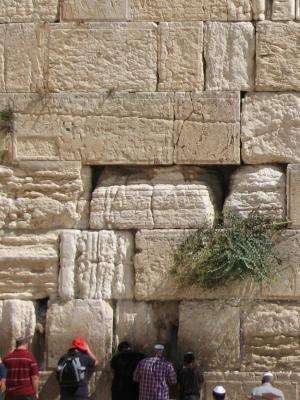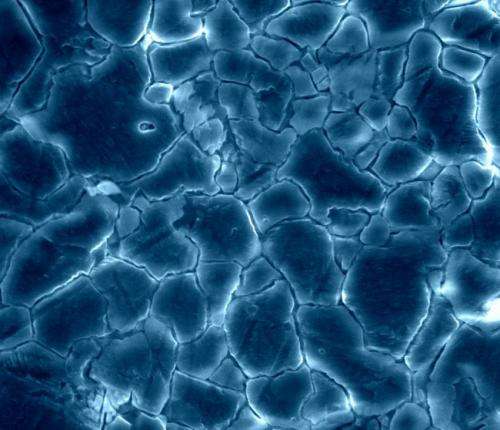Western Wall weathering: Extreme erosion explained

Visitors to the Western Wall in Jerusalem can see that some of its stones are extremely eroded. This is good news for people placing prayer notes in the wall's cracks and crevices, but presents a problem for engineers concerned about the structure's stability.
The Western Wall is a remnant of the ancient wall that surrounded the courtyard of the Jewish Temple in Jerusalem. It is located in Jerusalem's Old City at the foot of the Temple Mount.
To calculate the erosion in the different kinds of limestone that make up the Western Wall, researchers from the Hebrew University of Jerusalem used a laser scan to create an accurate three-dimensional computer model. The researchers are Dr. Simon Emmanuel, the Harry P. Kaufmann Senior Lecturer in Environmental Water Technology, and PhD student Mrs. Yael Levenson, at the Hebrew University's Institute of Earth Sciences.
As reported in an article accepted for publication in the journal Geology, they found that stones made up of relatively large crystals were resistant to wear, so that they were almost unchanged in the 2000 years since they were originally put in place. By contrast, limestone with very small crystals (about one thousandth of a millimeter in size) eroded far more quickly.
In some cases, extreme erosion rates in fine-grained micritic limestone blocks were up to 100 times faster than the average rates estimated for the coarse-grained limestone blocks. In some places these stones had receded by tens of centimeters, potentially weakening the overall structure.

To understand what causes the two types of rock to behave differently, the researchers collected samples from ancient quarries thought to have supplied the stones for the Second Temple. Using a powerful atomic force microscope, they were able to see how the rocks disintegrated when they came into contact with water. During the experiments on rocks made up of small crystals, tiny particles rapidly detached from the surface of the rock. These experiments simulated the way in which rain water interacts with limestone in nature.
Observed for the first time in Dr Emmanuel's lab, this process of accelerated erosion can explain why some rocks are more weathered than others. While mechanical weathering is thought to act on blocks and chips of rock at the visible outcrop scale, the researchers showed for the first time that chemo-mechanical erosion extends down to the tiny micron scale. The findings could have important implications for regional and global carbonate weathering.
According to Dr. Emmanuel, "Understanding such weathering processes could help guide the development of effective preservation techniques. For example, it may be possible to develop materials that slow the rate of erosion by binding the tiny crystals in the rock together. Advanced engineering techniques like this should assist efforts to protect not only the Western Wall, but other cultural heritage sites in Israel and around the world."
More information: The research appears as "Carbonate weathering rates accelerated by micron-scale grain detachment," in the journal Geology.
Journal information: Geology
Provided by Hebrew University of Jerusalem





















